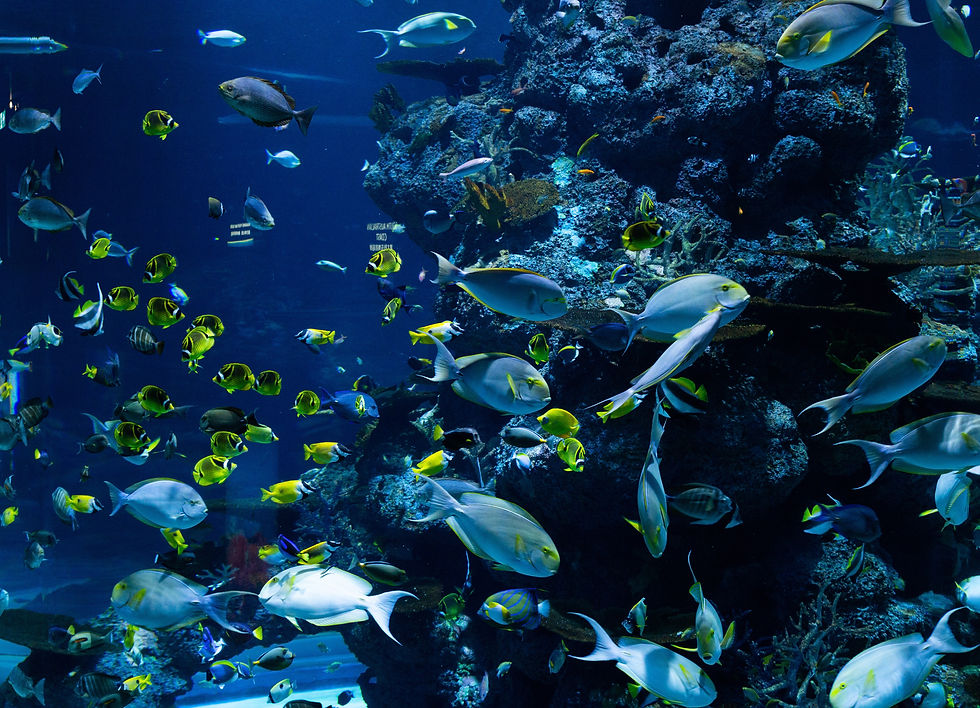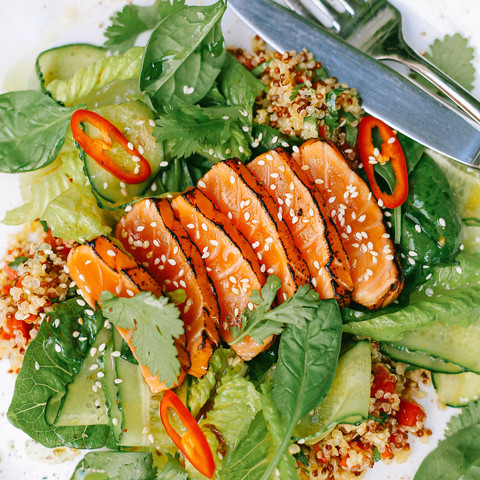Sustainable Ways To Eat Fish
- Diana Monteiro Toombs
- May 22, 2020
- 4 min read
One of the most pressing issues when it comes to sustainable living concerns our food and eating habits. Thinking about and interrogating where our food comes from is essential if we are to develop eating habits which not only ensure that we have plenty of food to sustain mankind, but which also take into consideration the wider impact that our eating habits have upon the planet and other food chains.
How we eat fish is one such area we need to (re)consider. It can be easy to assume that the vastness of the planet’s oceans means that fish are in plentiful supply and in no danger of running out. However, the simple truth is that as our technology has evolved and our global population has dramatically increased, so too has our fishing. Consequently, we have overfished many areas of the oceans.

Why We Need To Fish Sustainably
Most fishing takes place in costal seas, with only some limited fishing taking place in the high seas. By overfishing in these areas, we run the risk of causing certain species of fish to become endangered. For example, high levels of demand for North Sea cod and Atlantic salmon have caused numbers of both species to dramatically decline.
Sustainable fishing will not only help to prevent fish from becoming endangered or disappearing altogether but, crucially, will allow fish stocks to replenish. This will help to boost the numbers of fish in the sea and also help to redress the imbalances in food chains in our oceans, allowing for a healthier way of life for ourselves and our planet.
Luckily, there are steps that we can take to reduce and even reverse some of the damage we have already caused to the delicate ecosystems in our oceans. Marine reserves in costal waters have allowed fish numbers to increase. The overspill of fish from the marine reserves into the surrounding waters mean that fisherman have a steady supply of fish without having a negative impact or reducing the core of the breeding fish. Similarly, global initiatives, such as banning commercial whaling, has allowed whale numbers to recover impressively over the last 50 years.

How To Eat Fish Sustainably
So, how can we eat fish more sustainably? Like many areas of sustainable living, you don’t have to make big changes in your lifestyle to have a significant impact. Simply making small changes or adjusting your shopping or eating habits can have long-lasting, positive effects. When it comes to eating fish sustainably, there are some simple steps we can all take that can greatly help to improve our oceans.
Check the label – one simple step you can take is to ensure that you always check the label of the fish you are buying. Fish with a blue MSC (Marine Stewardship Council) tick means that the fish have been certified and caught using sustainable fishing methods.

Choose different fish – simply switching to a different species of fish will only shift demand from one species to another. Instead, try to widen the variety of fish you eat. You may well find a whole new species you enjoy even more. There are also a range of fish recipes available free online which can help you make exciting dishes with a range of fish types.
Buy sustainable tinned fish – from sardines to tuna, herring to salmon, there is a whole range of tinned fish available. Not only is it healthy, but it is also tasty and convenient. Make sure that it has the blue MSC label to ensure that it has been sustainably caught.
Avoid eating endangered species of fish – whenever possible, avoid eating fish species which are endangered or whose numbers have significantly reduced. For example, cod and bluefin tuna are two types of fish to avoid. There are different types of tuna. Whilst it’s not sustainable to buy or eat bluefin tuna, skipjack tuna is a good choice. Not only is this species more resilient to fishing, but they are also smaller and breed faster, meaning that our fishing can have a less damaging impact. Yellowfin tuna, bigeye tuna and albacore tuna are all acceptable to eat, proving they have been caught sustainably.
Choose line caught fish – where possible, opt instead for line or pole caught fish. You can also ask the staff at your local fishmongers or at the fish counter at most supermarkets where the fish comes from and how it was caught. If they can’t answer, then avoid buying it and choose another fish, brand or supermarket that has caught their fish ethically and sustainably.
Buy fish from your local fishmonger – buying locally-sourced food not only helps to support your local economy, but it also helps to reduce the carbon footprint of your food, including fish. Your local fishmonger should be able to tell you which fish is in season, as well as make recommendations for alternative fish types to try.

An Invitation…
One of the more positive aspects to have emerged from our time in lockdown for many families has been greater time spent cooking, preparing meals and engaging with family members during meal times.
This week, we invite you to experiment with a new fish recipe. Why not try to eat a different type of fish you’ve not eaten before? If you don’t eat fish, then attempt a new vegetarian or vegan recipe. If you’re growing your own vegetables or herbs, why not add some of these to your meal?
Find a recipe you like and involve your whole family in the preparation and ritual of cooking itself. Spending time together preparing meals not only allows opportunity for dialogue around sustainable food to emerge, but it is also a simple and effortless way to reconnect with one another.
Developing a more sustainable lifestyle doesn’t have to involve big or extreme changes. Let us all take one small step this week towards more sustainable eating habits and share our experiences and recipes with each other in the comments below.







Comments